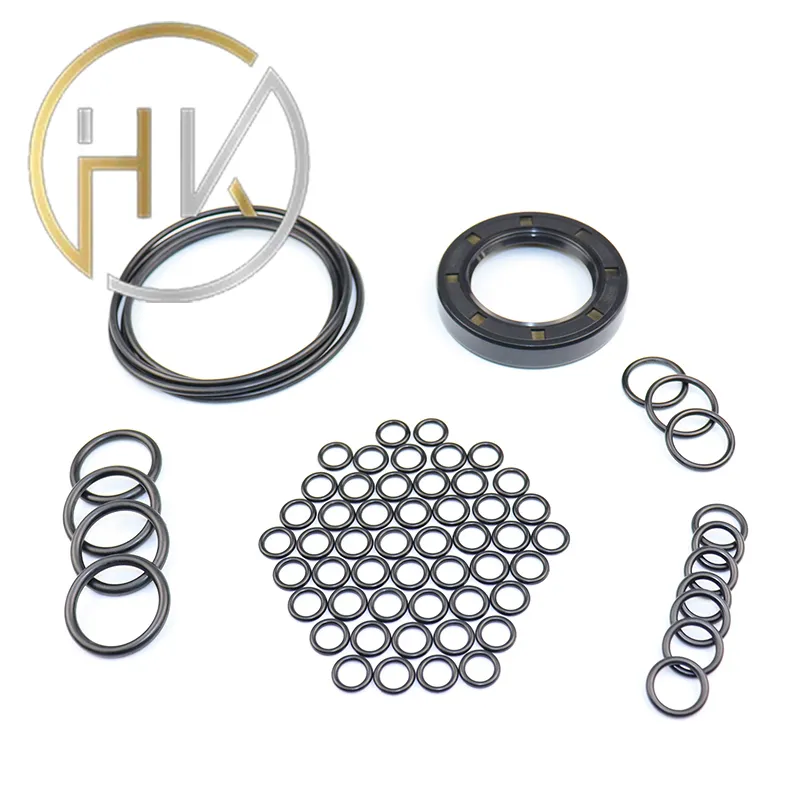Nov . 20, 2024 20:26 Back to list
wiper seal types
Understanding Wiper Seal Types A Comprehensive Overview
Wiper seals, essential components in various machinery including hydraulic systems, automotive applications, and even industrial equipment, play a pivotal role in preventing fluid leakage and protecting moving parts from contaminants. The effectiveness and efficiency of sealing capabilities can greatly influence the overall performance and durability of a machine. This article delves into the various types of wiper seals, their functions, materials, and applications.
What Are Wiper Seals?
Wiper seals are designed to remove dirt, dust, and other contaminants from the surface of a rod or piston. They are often installed at the outer edge of a cylinder to ensure that any particles are wiped away before they can enter the system. This not only preserves the integrity of the lubricating fluid or hydraulic oil but also enhances the lifespan of the equipment by minimizing wear on moving parts.
Types of Wiper Seals
1. Single Lip Wiper Seals Single lip wiper seals are the most common type used in various applications. These seals consist of a single lip that wipes the rod or piston as it moves. They are relatively simple in design but very effective in keeping debris out. They are commonly made from elastomeric materials and can be used in a wide range of temperatures and environments.
2. Double Lip Wiper Seals Double lip wiper seals incorporate two wiping edges, providing enhanced protection against contamination. The additional lip can create a better seal, particularly in harsh environments where dirt and debris are prevalent. These seals are ideal for applications subjected to heavy contamination and where optimal sealing performance is critical.
3. V-Ring Wipers V-ring wipers feature a triangular cross-section, allowing them to create a dynamic sealing action. These seals can absorb some axial movement, making them suitable for applications with slight misalignment. They are often used in rotating applications due to their ability to maintain a seal under dynamic conditions.
wiper seal types

4. U-Cup Wipers U-cup wipers have a U shaped cross-section, which provides a more robust sealing surface. They can be designed to manage higher pressures and are often deployed in hydraulic applications. U-cup wipers provide excellent performance in both static and dynamic sealing conditions and are particularly effective in situations requiring a resilient seal.
5. PTFE Wiper Seals Polytetrafluoroethylene (PTFE) wiper seals are made from a high-performance plastic that exhibits excellent chemical resistance, low friction, and high-temperature tolerance. These seals are particularly advantageous in aggressive environments where standard elastomers might fail. PTFE wiper seals are ideal for applications involving chemicals or where high temperatures are maintained.
Material Considerations
The materials used in wiper seals are crucial to their performance. Common materials include various grades of rubber, silicone, polyurethane, and PTFE. The choice of material often depends on the environmental conditions the seals will face, such as exposure to chemicals, temperature ranges, and the presence of abrasive particles.
Applications
Wiper seals are pivotal across a wide range of industries. In automotive applications, they can be found in shock absorbers, where they prevent dirt from entering the piston assembly. In hydraulic systems, wiper seals are crucial for heavy machinery, ensuring smooth operation by keeping hydraulic fluid clean and reducing the risk of system failure.
Conclusion
In summary, understanding the types and functions of wiper seals is vital for anyone involved in machinery design, maintenance, or operation. Each type of wiper seal has its unique advantages and applications, making it essential to select the right seal for specific environmental conditions and operational demands. By employing the appropriate wiper seals, organizations can significantly enhance the reliability and longevity of their equipment.
-
Unlocking the Potential of Hydraulic Systems with Essential Sealing Solutions
NewsAug.06,2025
-
Unleash the Power of Your Hydraulic Systems with Our Premium Seal Kits
NewsAug.06,2025
-
Specialized Hydraulic Seal Kits for Breakers, Pistons, and Presses
NewsAug.06,2025
-
Revitalize Hydraulic Systems with Premium Repair and Seal Kits
NewsAug.06,2025
-
Fortify Your Cylinders with Premium Sealing Solutions
NewsAug.06,2025
-
Elevate Hydraulic System Reliability with Specialized Seal Kits
NewsAug.06,2025
-
TCN Oil Seal Metal Ring Reinforcement for Heavy Machinery
NewsJul.25,2025
Products categories
















